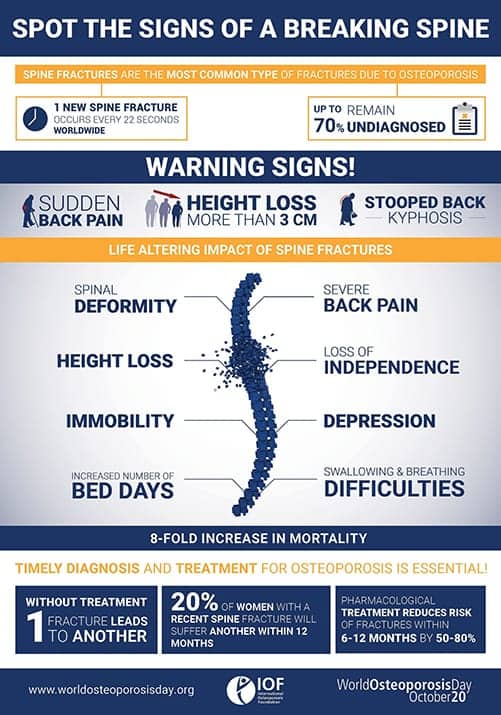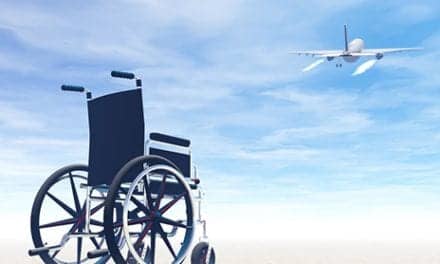As part of World Osteoporosis Day, observed on October 20, The International Osteoporosis Foundation (IOF) urges people around the world to take action to maintain their bone health and prevent osteoporosis.
Osteoporosis is the cause of broken bones in approximately one in three women and one in five men aged 50 and over worldwide.
Spine (or “vertebral”) fractures are the most common osteoporotic fractures—with one new fracture estimated to occur every 22 seconds worldwide. One in five women with a spine fracture will suffer another within 12 months, with serious impact on their quality of life, the IOF suggests.
However, IOF continues in a media release, although they are a major cause of pain and long-term disability, up to 70% of vertebral fractures don’t come to clinical attention.
“Patients with sudden back pain are often simply prescribed pain killers and not properly assessed and treated for the underlying cause. Yet without preventive treatment, one spine fracture can initiate a cascade of more broken bones, which in turn lead to long-term pain and disability,” states IOF president, Professor Cyrus Cooper, in the release.
“We advise radiologists who routinely perform x-rays to be on the lookout for vertebral fractures and to correctly report these as ‘fractures.’ Physicians too must do their part to ensure that once identified, patients benefit from appropriate treatment and management strategies, before further damaging and life-threatening fractures occur,” Cooper adds.
Fractures due to osteoporosis represent an enormous burden to healthcare systems, and costs are predicted to rise markedly over the next few decades. IOF calls for the implementation of Fracture Liaison Services in hospitals worldwide – a critical step forward in reducing the human and economic costs of fragility fractures. Such services help ensure that a patient’s first break is their last.
Among the available resources from IOF to mark World Osteoporosis Day is the One-Minute Osteoporosis Risk Test, designed to help adults identify their personal risk factors for osteoporosis.
[Source(s): The International Osteoporosis Foundation, PR Newswire]






